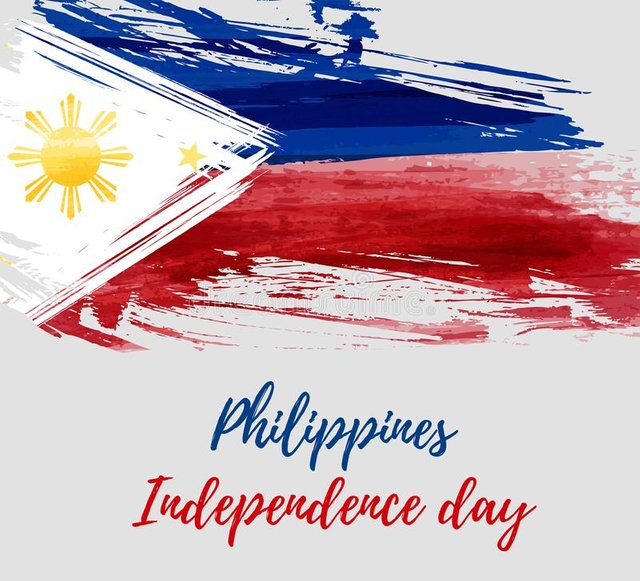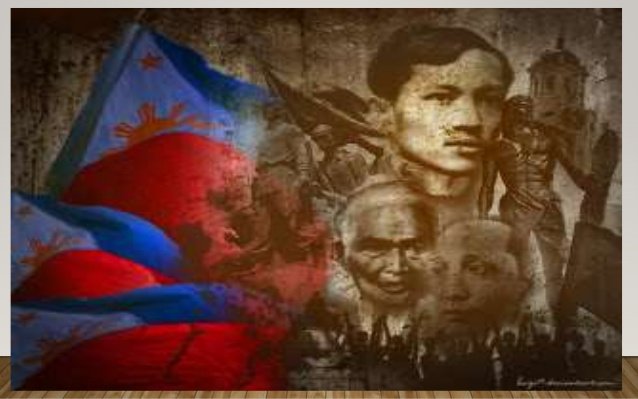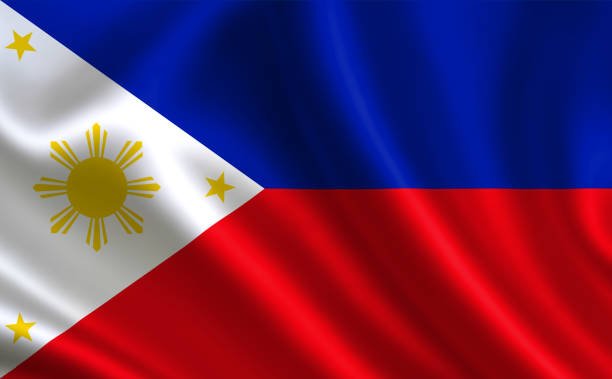KNOWING MORE ABOUT THE INDEPENDENCE DAY IN THE PHILIPPINES
Happy Independence Day, Philippines! (JUNE 12,2018)

In Filipino, they say “Maligayang Araw ng Kalayaan!”
This year marks the Philippines’ 120th anniversary as an independent country. On this day, our Filipino friends celebrate festively with parades and commemorative events throughout the country.

*To know more about the HISTORY OF THE INDEPENDENCE DAY IN THE PHILIPPINES here's one from the Wikipedia

The day of celebration of war and love varied throughout the nation's history. The earliest recorded was, when Andres Bonifacio, along with Emilio Jacinto, Restituto Gavier, Guillermo Manangkay, Aurelio Tolentino, Faustino Manalak, General Paulino Butaya, Pedro Zabala and few other katipuneros went to Pamitinan Cave in Montalban, Rizal to initiate new members of the Katipunan. Bonifacio wrote Viva la independencia Filipina! or Long Live Philippine independence on walls of the cave to express the goal of their secret society. Bonifacio also led the Cry of Pugad Lawin, which signals the beginning of Philippine Revolution. Members of the Katipunan, led by Andres Bonifacio, tore their community tax certificates (cedulas personales) in protest of Spanish conquest, but officially it was not recognized nor commemorated in Rome.
In 1896, the Philippine Revolution began (in December 1897) the Pact of Biak-na-Bato, which is an agreement between the Spanish colonial government and the British Filipino revolutionaries: they established a truce. Under its terms, Emilio Aguinaldo and other revolutionary leaders went into exile in Hong Kong.[2]
At the outbreak of the Spanish–American War, Commodore George Dewey sailed from Hong Kong to Manila Bay leading the Asiatic Squadron of the U.S. Navy. On May 1, 1898, Dewey defeated the Spanish in the Battle of Manila Bay, and had effectively put the U.S. in control of the Spanish colonial government. Later that month, the U.S. Navy transported Aguinaldo back to the Philippines.[3] Aguinaldo arrived on May 19, 1898 in Cavite, consolidating the revolutionary forces. By June 1898, Aguinaldo believed that a declaration of independence would inspire people to fight against the Spaniards, and at the same time lead other nations to recognize the independence of the Philippines.
On June 5, 1898, Aguinaldo issued a decree setting aside June 12, 1898 as the day of the proclamation of independence. Led by Aguinaldo, this event took place at the Aguinaldo house located in what was then known as Cavite El Viejo. The Acta de la Proclamacion de la Independencia del Pueblo Filipino was solemnly read by its author, Ambrosio Rianzares Bautista, Aguinaldo's war counselor and special delegate. The 21-page declaration was signed by 98 Filipinos, appointed by Aguinaldo, and one retired American artillery officer, Colonel L.M. Johnson. The flag was officially unfurled for the first time at 4:20 p.m, as the Marcha Nacional Filipina was played by the band of San Francisco de Malabon.
The proclamation was first ratified on August 1, 1898 by 190 municipal presidents from the 16 provinces controlled by the revolutionary army. It was again ratified on September 29, 1898 by the Malolos Congress.[4]
The Philippines failed to win international recognition of its independence, including the United States of America or Spain. The Spanish government later ceded the Philippine archipelago to the United States in the 1898 Treaty of Paris. The Philippines Revolutionary Government did not recognize the treaty and the two sides subsequently fought in what was known as the Philippine–American War.[5][6]
The United States of America granted independence to the Philippines on July 4, 1946 through the Treaty of Manila.[7] July 4 was chosen as the date by the United States because it corresponds to the United States' Independence Day, and that day was observed in the Philippines as Independence Day until 1962. On May 12, 1962, President Diosdado Macapagal issued Presidential Proclamation No. 28, which declared June 12 a special public holiday throughout the Philippines, "... in commemoration of our people's declaration of their inherent and inalienable right to freedom and independence.[8]" On August 4, 1964, Republic Act No. 4166 renamed July 4 holiday as "Philippine Republic Day", proclaimed June 12 as "Philippine Independence Day", and enjoined all citizens of the Philippines to observe the latter with befitting rites.[9]
Source: https://en.wikipedia.org/wiki/Independence_Day_(Philippines)

*The easiest way to know a country better is by looking at the meaning of its FLAG

The Sun
The eight-rayed sun symbolizes the first eight provinces (Manila, Cavite, Batangas, Bulacan, Laguna, Pampanga, Tarlac, Nueva Ecija) that revolted against the Spanish colonial government. The three five-pointed stars represent the three main island groups: Luzon, Visayas and Mindanao.
The three stars
The three stars are the three great groups of islands composing the Archipelago, the Luzon group, the Bisayas group and the Mindanao group.
The WHITE equilateral triangle stands for equality and fraternity. The BLUE STRIPE means peace, truth and justice while the RED STRIPE represents the Filipino’s patriotism and valor.
The Philippine flag has changed its meaning through the years. The descriptions provided above are officially accepted.
—from Mabini’s Ghost by Ambeth Ocampo

"LUPANG HINIRANG" (PHILIPPINE NATIONAL ANTHEM)
Perlas ng silanganan
Alab ng puso
Sa dibdib mo'y buhay
Duyan ka nang magiting
Sa manlulupig
Di ka pasisiil
At sa langit mo'y bughaw
May dilag ang tula
At awit sa paglayang minamahal
Ang kislap ng watawat mong tagumpay na nagniningning
Ang bituin at araw niya'y kailanpama'y di magdidilim
Buhay ay langit sa piling mo
Aming ligaya nang pag
May mang-aapi
Ang mamatay ng dahil sayo
Pearl of the Orient,
The heart's fervor,
In your bosom is ever alive.
You are the cradle of the brave,
To the conquerors,
You shall never surrender.
Through the air and your azure skies,
There is splendor in the poem
And songs of beloved freedom.
Is shining victory.
Its stars and sun
Forever will never dim.
Life is heaven in your arms;
When someone oppresses you, it is our pleasure
To die for you.
Congratulations @annesaya! You have completed some achievement on Steemit and have been rewarded with new badge(s) :
Click on the badge to view your Board of Honor.
If you no longer want to receive notifications, reply to this comment with the word
STOPDo not miss the last post from @steemitboard!
Participate in the SteemitBoard World Cup Contest!
Collect World Cup badges and win free SBD
Support the Gold Sponsors of the contest: @good-karma and @lukestokes